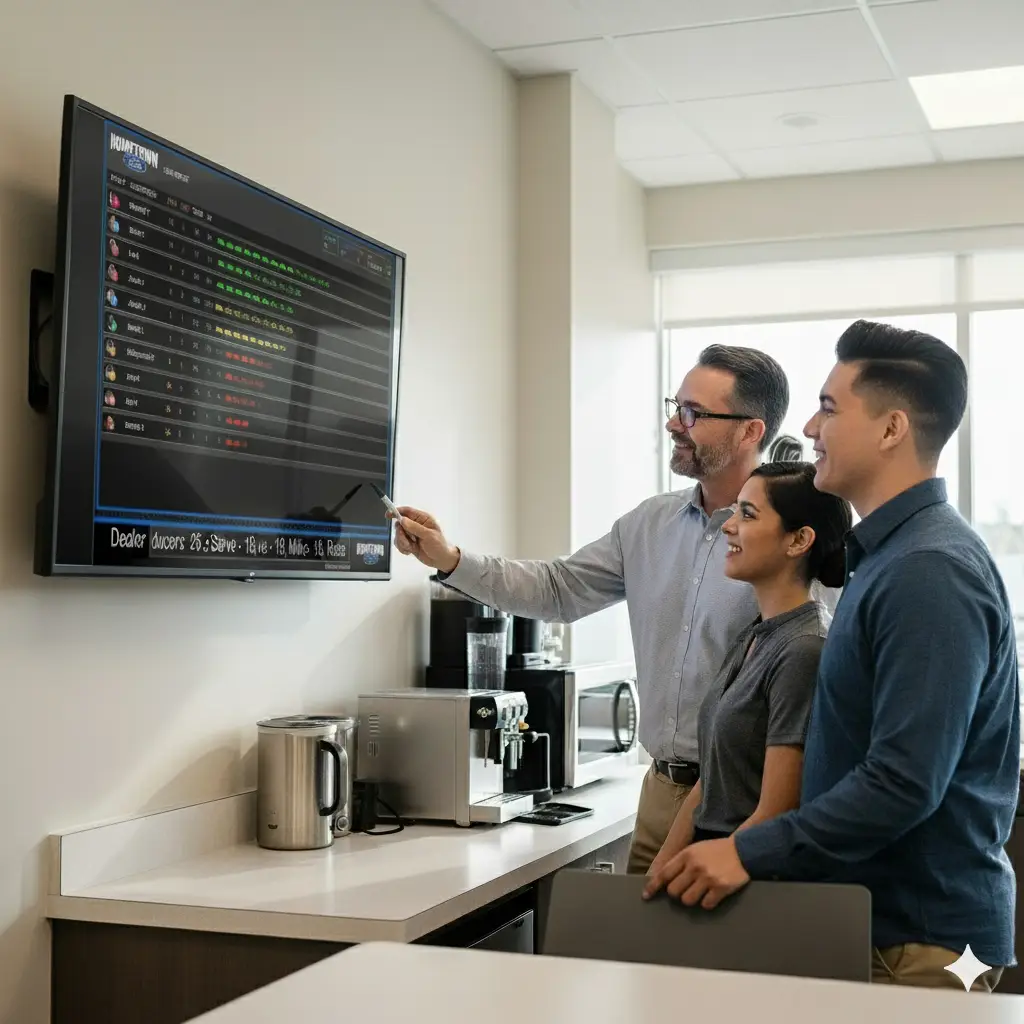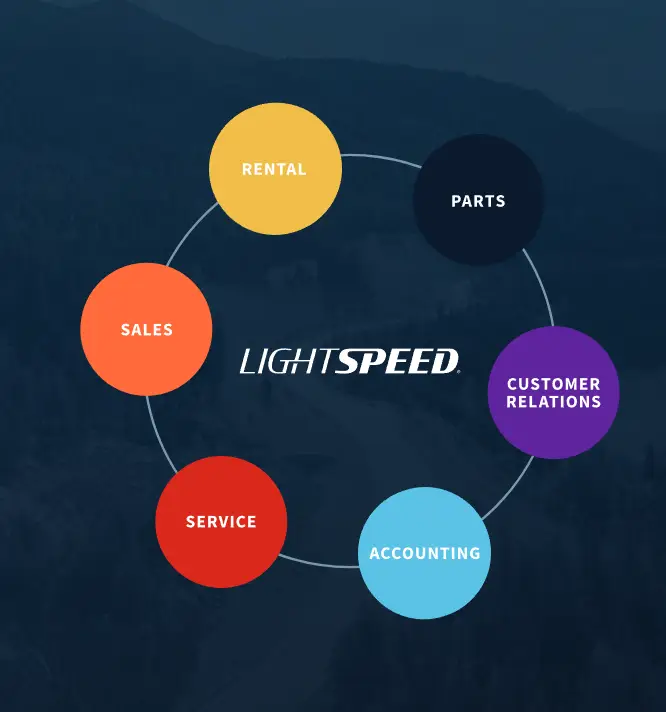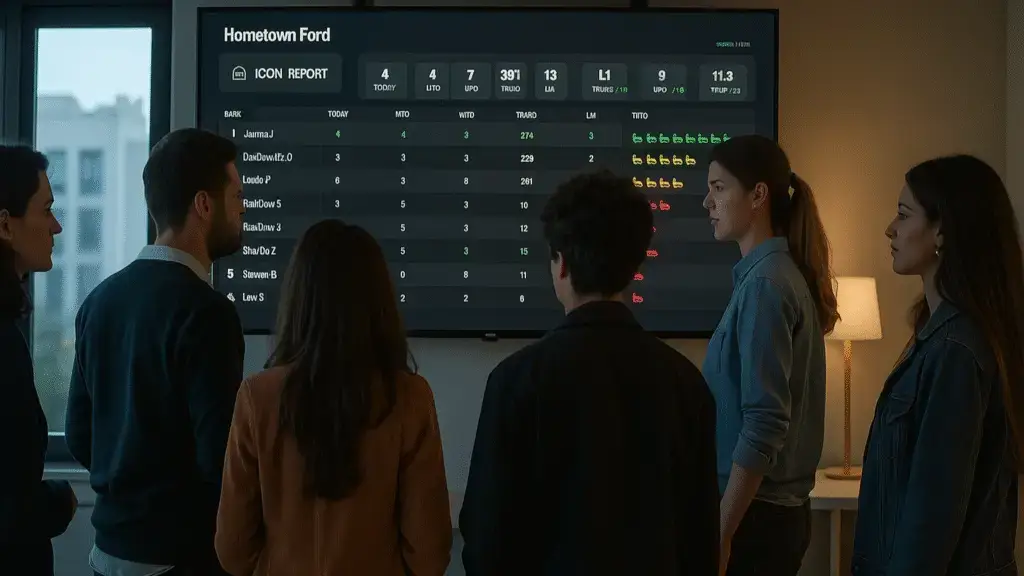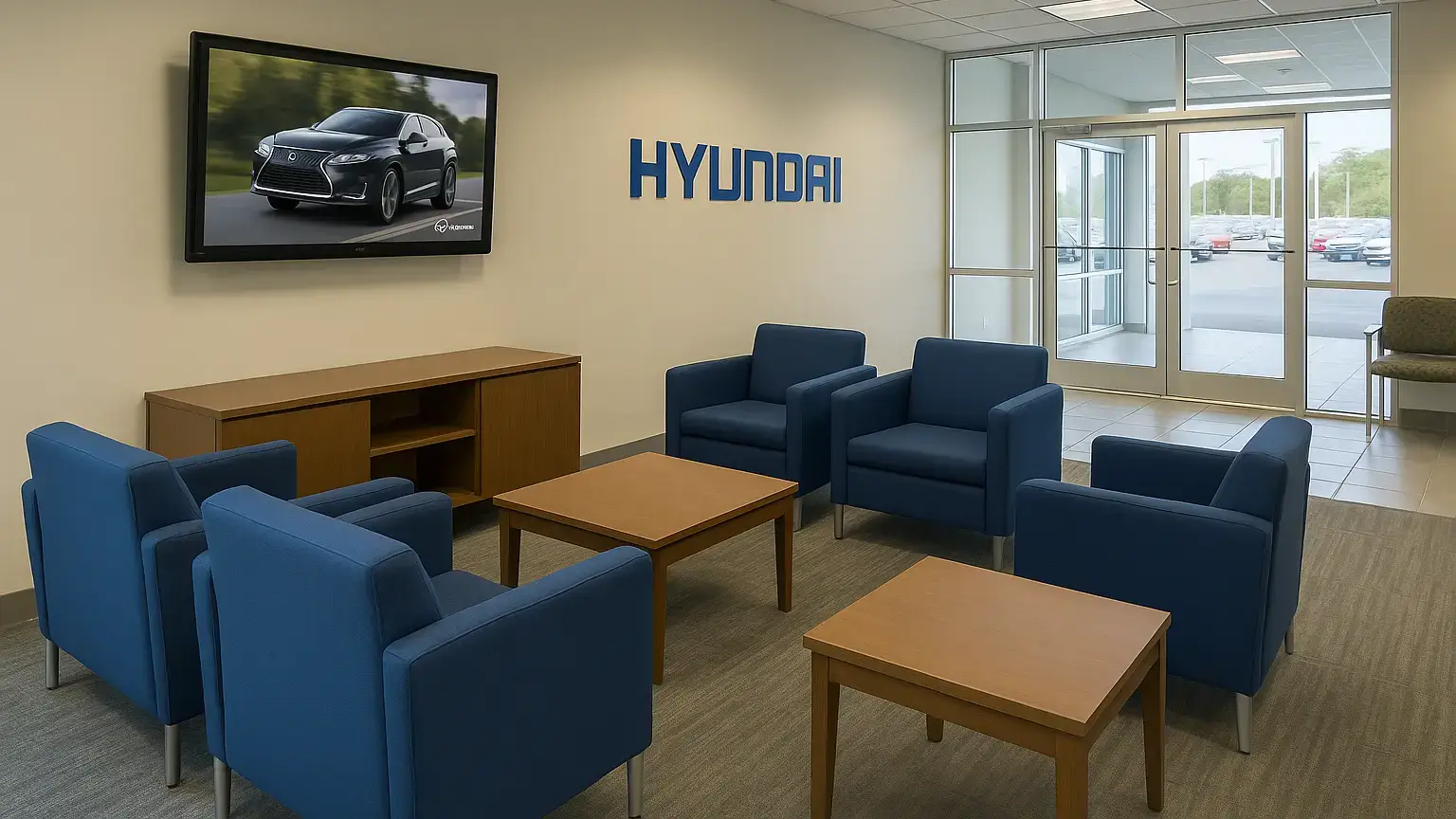Did you know that dealership profits have dropped a lot? They went from 8.9% in 2015 to just 1.7% in the first half of 2018. This big change shows how the car market is always shifting. The trade-in process is now key to help dealerships stay afloat and encourage customers to upgrade.
As used car prices start to stabilize this spring, dealerships must focus on trade-ins. This is crucial to keep making money.
Key Takeaways
- Operational profits in dealerships have declined significantly, pushing the need for efficient trade-in processes.
- Used car market dynamics require strategic trade-in promotions to stabilize inventories and profit margins.
- Highlighting the benefits of the trade-in process can engage more customers in vehicle upgrade campaigns.
- Accurate vehicle value assessment is key to maintaining customer trust and a profitable trade-in process.
- Integrating trade-in options prominently on dealership websites can convert more customers and boost inventories.
Understanding the Importance of Trade-Ins in the Automotive Market

Trade-ins are key in the car market, bringing big benefits but with some uncertainty. Used car prices can change a lot, so both buyers and sellers need to keep up. Trade-ins offer money savings and make buying a new car easier for many people. Let’s look closer at how used car prices change and the good things for both sides.
Volatility of Used Car Prices
Used car values can swing a lot because of many things like the season, the economy, and demand. For example, in mid-March 2024, used car prices went up a bit. It’s important for buyers and sellers to know these changes to make smart trade-in choices. Keeping an eye on the market can help make trade-ins more profitable.
Benefits of Trade-Ins for Customers and Dealerships
Trade-ins are great for customers because they save time and can get tax breaks. In many places, trade-ins only tax the difference between the old and new cars. This makes buying a new car more affordable. Plus, it makes the whole process quicker.
Dealerships also gain a lot from trade-ins. They get cars at a lower cost than from auctions. This helps dealers offer better deals, attracting more customers. Trade-ins also lead to more service visits, helping dealers keep customers happy and coming back.
| Consumer Preferences | Statistics |
|---|---|
| Shopping Online | 92% |
| Mix of Online and In-Person Shopping | 71% |
| Entirely Online Purchase | 21% |
| Interest in Online Purchases (Millennials & Gen Z) | 87% |
As the car market keeps changing, using trade-ins is a smart move for both dealers and customers. Keeping an eye on price changes and using trade-in benefits can lead to better results for everyone.
Integrating Trade-In Options into Dealership Websites

To make the most of trade-ins, dealerships should highlight these options on their websites. This makes it easier for users to find and use these services. It also helps improve the overall experience for visitors.
Adding Trade-In Links to Navigation
Adding “Trade-In/Sell Your Car” and “Service Appointment” links to the main navigation is key. This makes it easier for users to find these services. It also makes your website more user-friendly.
Most new cars today come with telematics, which dealerships can use to their advantage. This technology helps suggest new cars based on driving habits. It also gives accurate trade-in values for current vehicles.
Promoting Trade-Ins with Website Banners
Website banners are a great way to showcase trade-ins. They grab attention and encourage visitors to explore trade-in options. Use clear and engaging online trade-in promotions to boost interest and sales.
UTM tags are important for tracking how well these promotions work. They help you see what’s effective and what needs improvement.
Many car owners are unhappy with dealership services, citing scheduling and long wait times. Predictive maintenance alerts can help fix this. They make service more efficient and improve customer satisfaction.
Dealerships can also use connected car data to offer personalized deals for maintenance and trade-ins. This ensures a smooth and tailored experience for today’s customers.
Driving Vehicle Upgrades: Promoting Trade-Ins with Dealership Digital Signs
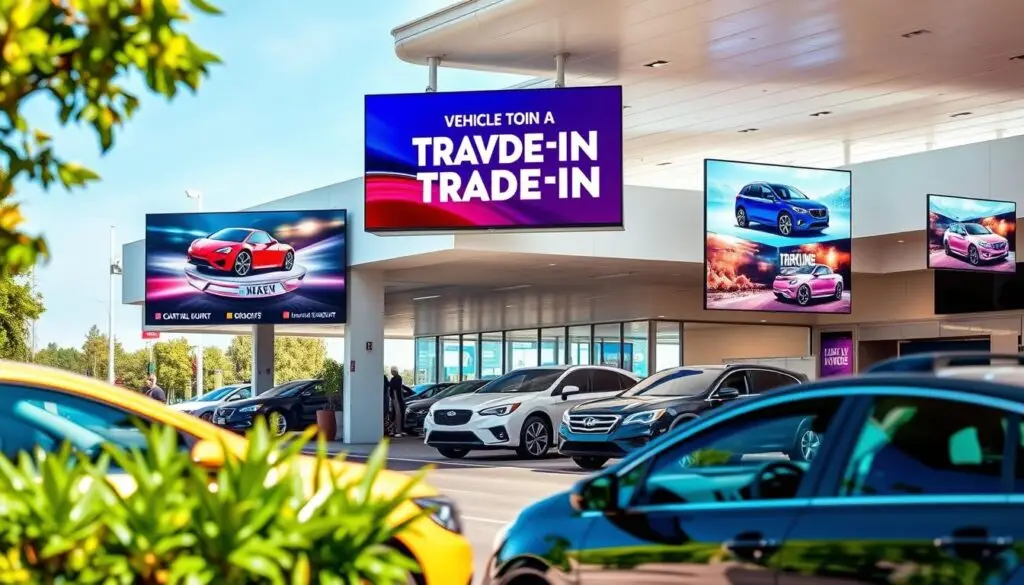
In today’s market, using digital signs to promote trade-ins is key. These signs grab customers’ attention and encourage them to upgrade their vehicles. They clearly show the benefits and steps of trading in a car, helping customers make up their minds.
Using digital signs in showrooms can boost profits by up to 30%. They draw more attention than static signs because they move and play videos. This makes them more effective and lets dealers show off more cars, leading to more sales.
Digital signs also save money compared to old marketing methods. They are durable and use less energy, thanks to commercial LCD screens. With cloud-based software, dealers can easily update their signs and content.
Digital signs do more than just promote trade-ins. They can show off inventory, schedules, and customer feedback. They can also highlight special deals and loyalty programs. Plus, linking them to social media boosts brand visibility and customer interaction.
The Digital Dealership System offers digital signage solutions for various dealership areas. It includes tools like the Sales Leaderboard and Service Advisor Tracking. These help dealers track important metrics, increase profits, and keep customers happy.
This system sends out timely, personalized messages. It ensures a mix of content that’s safe for families and specific to the dealership. This approach strengthens customer loyalty and engagement, making it a powerful tool for promoting trade-ins.
SEO and Conversion Rate Optimization Techniques

In today’s market, it’s key for car dealerships to boost their online presence. They can do this by using automotive SEO and making trade-in tools more visible. This makes it easier for people to find and use these offers on dealer websites.
Good automotive SEO can lead to a big jump in website traffic. In just six months, you could see a 89% increase. Sales can also rise by 43% after a year. This shows how important it is to create content that meets customer needs.
Doing local market research helps target the right keywords. This boosts your digital marketing return on investment. It’s all about finding the right words that people are searching for.
For trade-in conversions, it’s vital to track how users interact with your site. A site that works well on mobile devices helps too. Focus on keywords that match what people are looking for when they want to trade in a car.
Getting links from reputable sites is a big part of SEO. It not only improves your site’s authority but also brings in more visitors. Keeping your site clean and monitoring for spam helps keep your site trustworthy. Setting SMART goals helps make sure your digital campaigns are effective and easy to measure.
| Key Aspect | Action |
|---|---|
| Market Research | Analyze local market, search volume, and search intent to develop keywords. |
| Content Creation | Create tailored and valuable content for potential customers. |
| Backlink Strategy | Build high-quality backlinks and clean up spam links. |
| Mobile Optimization | Ensure the website is responsive and user-friendly on all devices. |
| Tracking and Analytics | Set up Google Analytics to monitor trade-in conversions and CRO. |
Understanding different market segments is crucial. Dealerships can tailor their strategies to reach young professionals, budget-conscious families, and rural commuters. By focusing on these groups and using conversion rate optimization, dealerships can increase trade-in conversions and succeed in a changing market.
Effectiveness of Targeted Advertising for Trade-Ins
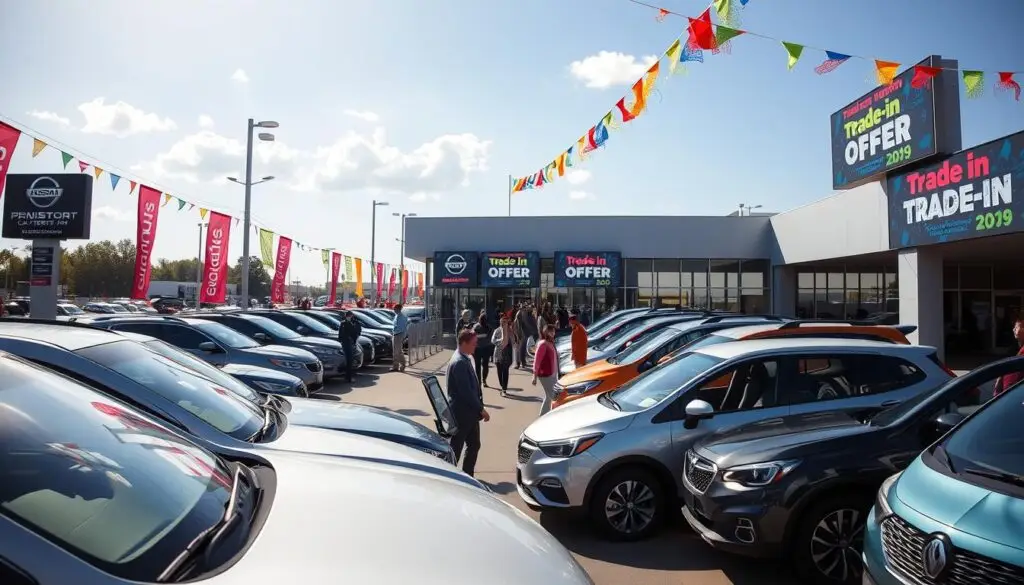
Targeted advertising is key to catching the eye of customers looking to trade in their vehicles. By focusing on specific groups, dealerships can attract more qualified leads to their trade-in programs.
Using Google Ads
Using Google Ads for trade-ins helps dealerships direct users to special trade-in pages. These ads target users searching for specific terms, reaching more potential trade-in customers. Since 74% of shoppers are okay with sharing personal info online, ads can be tailored to get people to act fast.
Utilizing Social Media Platforms
Social media marketing is a budget-friendly way to promote trade-ins. Sites like Facebook let you target ads to people close to their trade-in time. High-performing Facebook ads can get users to share their contact info, making the process smoother. With 88% of customers valuing online reviews as much as personal ones, it’s crucial to keep social media engagement positive.
Segmented Email Campaigns
Effective email campaign segmentation means sending tailored messages to past customers likely to trade in. By segmenting based on how long they’ve owned their vehicle and repair history, dealerships can boost their return on investment. Stats show dealers using digital tools saw a 76% better relationship with customers, proving the power of targeted ads.
| Advertising Method | Platform | Key Benefits |
|---|---|---|
| Google Ads | Search Engine | High intent targeting, immediate engagement |
| Social Media Ads | Cost-effective, advanced targeting options | |
| Segmented Emails | Personalized messaging, high ROI |
Customer Engagement Tactics for Trade-In Promotions
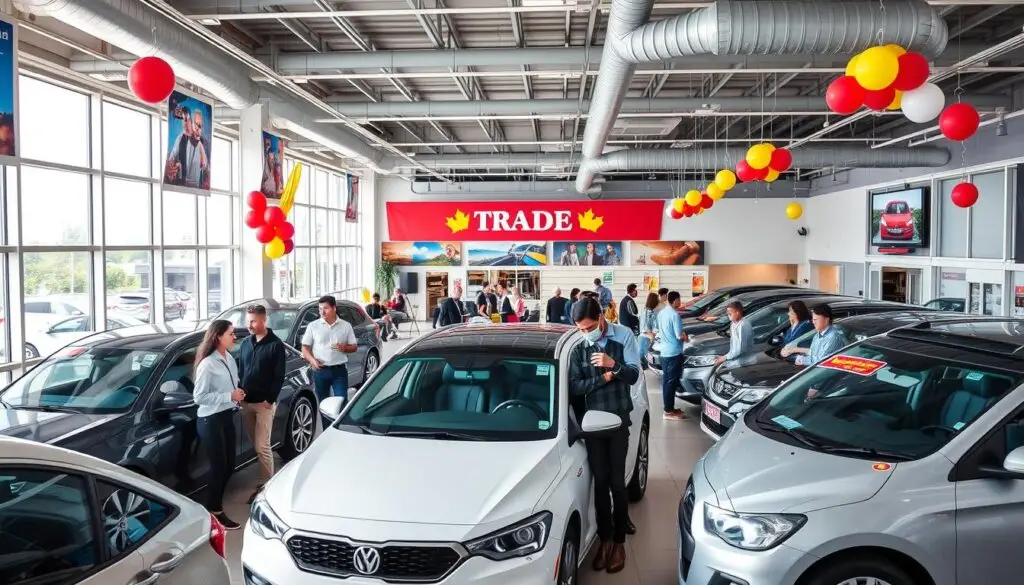
Engaging customers is key for trade-in promotions. Dealerships can use in-store and digital tactics. Placing promotional materials in showrooms and having knowledgeable sales teams helps.
Offering personalized consultations and instant appraisals makes trade-ins more appealing. Hosting car care clinics can boost trust and loyalty by 20%. This encourages more people to trade in their cars.
In-Store Marketing Strategies
Dealerships should use smart in-store marketing to boost trade-ins. Eye-catching banners and signs draw attention to promotions. Well-trained staff can give accurate trade-in information, building trust.
Services like picking up trade-ins and house visits for test drives can increase trade-ins by 30%. They also raise customer satisfaction by 25%. A vehicle swap program and discounted maintenance services can attract more customers and keep them coming back by 15%.
Creating a Seamless Omnichannel Experience
A smooth omnichannel experience is crucial for consistent branding. Dealerships can use digital tools like AI chatbots for 24/7 support. This improves personalization by 20% and engagement by 30%.
Virtual reality test drives and personalized video walkthroughs can engage customers by 25%. They also boost conversion rates by 35%. A unified journey from online to in-store keeps customers interested and encourages trade-ins.
Leveraging Data-Driven Decision Making for Trade-In Programs
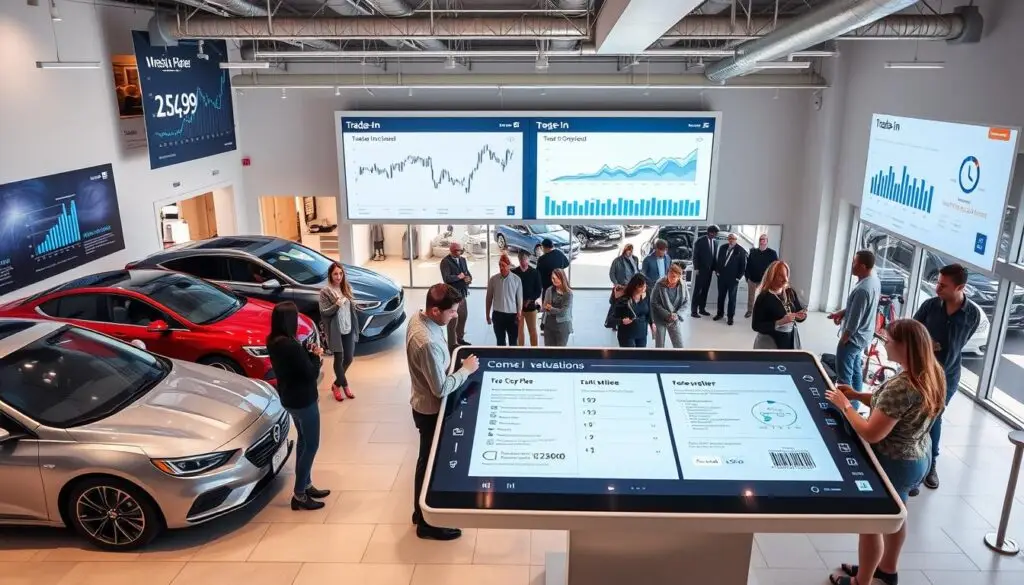
In today’s fast-changing car market, making smart trade-in decisions is key for dealerships. They use advanced tools that use AI and current market data. This helps them accurately check vehicle conditions and offer good trade-in values. It makes sure their trade-in programs meet market needs and customer expectations.
Importance of Accurate Market Data
Having the right market data is vital for dealerships to succeed. By using data activation tech, like a Customer Data Platform (CDP), they can turn vast amounts of data into useful insights. AI helps by analyzing customer interactions and predicting their future actions. This gives dealerships better sales plans, targeted marketing, and better customer service.
- AI-powered data activation supports targeted marketing, improving ROI.
- Personalized marketing messages increase customer engagement and loyalty.
- Real-time data helps dealerships make informed decisions.
Utilizing Trade-In Tools
Trade-in tools are crucial for dealerships wanting to improve their trade-in programs. Tools that use AI and real-time data give accurate car values. This lets dealerships offer good trade-in deals that draw in customers. By combining data from various sources, dealerships understand market trends and customer needs better. This approach helps them make decisions based on current market conditions.
| Benefit | Description |
|---|---|
| Accurate Evaluations | Utilizing AI-driven tools for precise vehicle condition assessments. |
| Competitive Offers | Real-time market data enables competitive trade-in values. |
| Informed Decisions | Data-driven strategies ensure alignment with market conditions. |
By using these trade-in tools and a strong data-driven approach, dealerships can better meet market changes. This leads to happier customers and more loyalty.
Trade-In Incentives and Promotions
Dealerships can offer great incentives and promotions to encourage trade-ins. They can use data to make their offers appealing and competitive. This way, they can attract more customers.
Offering Competitive Trade-In Values
It’s important to offer good trade-in values to attract and keep customers. Many people want to save money by trading in their cars. Plus, in most states, you only pay sales tax on the difference between the trade-in and the new car’s price.
Dealers can make their trade-in offers even better by adding personalized incentives. For example, they could offer loyalty bonuses or special financing for trade-ins. This makes the process more attractive for both the dealer and the customer.
Promotional Campaign Ideas
Promotional campaigns can really highlight the benefits of trade-ins. Here are some ideas:
- Limited-Time Trade-Up Events: Create a sense of urgency with short-term promotions that encourage immediate action.
- Loyalty Bonuses: Reward returning customers with additional trade-in value or exclusive deals.
- Seasonal Campaigns: Align promotional efforts with peak car buying seasons to maximize impact.
- OEM Promotions: Partner with Original Equipment Manufacturers (OEMs) to offer exclusive trade-in incentives.
- Strategic Advertising: Use a mix of digital and in-store marketing to reach a broader audience and highlight trade-in deals.
By using these strategies, dealerships can make their trade-in deals more visible and successful.
| Strategy | Benefit | Example |
|---|---|---|
| Competitive Trade-In Values | Attracts cost-conscious customers | Higher trade-in value offers during promotional seasons |
| Limited-Time Trade-Up Events | Creates urgency | End-of-year clearance events |
| Loyalty Bonuses | Increases customer retention | Extra $1,000 trade-in value for repeat customers |
| Seasonal Campaigns | Aligns with buyer behavior | Summer sales events with additional trade-in savings |
Digital Signage Strategies for Promoting Vehicle Upgrades
In today’s world, using digital signage strategies is key for car dealerships. It helps promote vehicle upgrades well. Knowing the types and best practices of digital signage ensures your message reaches customers effectively and in an engaging way.
Types of Digital Signs
Different types of car dealership digital advertising offer unique chances to draw in customers. Here are some of the most effective ones:
- Leaderboard Banners: These banners are big and grab attention. They’re great for showing off special offers and upgrades.
- Large Rectangles: These signs are versatile and engaging. They can be used all over the dealership to share detailed info on vehicle upgrades.
- Mobile-Optimized Formats: Many customers use smartphones for research. So, mobile-friendly digital signs are crucial for catching their eye on the go.
Best Practices for Digital Signage Content
Creating engaging signage content is vital for turning curiosity into sales. To make the most of your digital signage, follow these best practices:
- Consistency in Branding: Make sure your digital signage matches your dealership’s branding. This creates a unified customer experience.
- Clear Calls to Action: Every sign should have a clear call to action. This could be to learn more, visit a part of your dealership, or take advantage of an offer right away.
- Visual Appeal: Use high-definition LED displays and bright visuals to make your content pop. This helps create a memorable brand identity.
- Interactive Elements: Add features like interactive touch screens and VR showcases. These not only boost customer engagement but also let customers explore vehicle details and features hands-on.
Studies show a possible sales boost of up to 32% with effective digital signage strategies in your dealership. This makes it a strong tool for promoting vehicle upgrades and improving the customer experience.
By using these visual marketing tactics, you can make your dealership a leader in the industry. You meet the needs of today’s tech-savvy customers, leading to more sales and repeat business.
Sales Enablement Tools to Support Trade-Ins
Using sales enablement tools and training your team is key to trade-in success. These technologies help manage customer relationships well. They also boost trade-in sales strategies.
Training Sales Teams
It’s vital to train your sales teams well for trade-in talks. Role-playing can make them more confident and skilled. AI tools help create offers that fit each customer, leading to more upgrades and trade-ins.
Integrating CRM Systems
CRM systems are crucial for a smooth trade-in strategy. They connect with other systems for better insights. Salesforce Tableau CRM Analytics uses AI for detailed analysis, helping dealers improve sales.
Tools like TradePending give real-time market data for fair trade-in values. They also help show off your inventory with badges, making it more visible.
Case Studies of Successful Trade-In Campaigns
Looking at real examples of trade-in campaigns shows us what works. These stories share how dealerships succeed in marketing. They also give us tips for our own trade-in strategies. Let’s look at some examples and learn from them.
Examining Real-World Examples
Many trade-in campaigns have shown great results. For example, a big chain tested mail campaigns online. This confirmed their strategy and got more people involved. Another example is a dealership using new tech to meet RFID rules, showing tech’s role in trade-ins.
In healthcare, direct mail with special links increased sign-ups. In retail, studying email use improved customer interaction. These examples show how targeted messages and data can boost results in car marketing.
Lessons Learned
Lessons from these campaigns are key for future success. Making messages and offers personal can really help. Also, using time limits or special deals can make people more likely to trade in their cars.
Building trust with certified trade-ins also matters. It makes customers more likely to come back. These successes show the value of a smooth trade-in process. It can lead to more sales and happy customers.
Effective analysis of campaigns shows the need for flexible plans. These plans should focus on what customers want. By understanding and meeting customer needs, dealers can sell more cars and get better values.
Overall, successful trade-in campaigns use detailed analysis and creative solutions. By studying these examples, we can improve our strategies and get better results.
Conclusion
As we conclude our look at promoting trade-ins for vehicle upgrades, we see a few key points. The best approach combines strategies that make customers happy and help dealerships grow. Using digital tools like digital signage is key. It helps connect with customers in-store and online.
Using data to guide decisions makes campaigns more personal and effective. Digital signage, for instance, lets you update content easily and track customer interactions. This helps tailor messages to what customers want. It makes showing off services and deals more efficient and enjoyable for everyone.
Keeping marketing fresh and in line with what people want is crucial. Dealerships need to keep improving their online and in-store strategies. By focusing on a modern trade-in approach, dealers can boost trade-ins, sales, and customer loyalty over time.
FAQ
How can automated dealership marketing benefit from promoting trade-ins with dealership digital signs?
Promoting trade-ins with digital signs grabs customers’ attention. It drives vehicle upgrades by showing the benefits and process of trade-ins. This boosts customer engagement and increases trade-in evaluations and transactions.
Why is monitoring used car prices essential for trade-in programs?
Used car prices change a lot. Monitoring these changes helps dealerships set fair trade-in values. This ensures they stay competitive and profitable.
What benefits do trade-ins offer customers and dealerships?
Trade-ins are convenient for customers and may offer tax benefits. Many states tax only the difference between the trade-in and new vehicle purchase. Dealerships get inventory at lower costs, boosting service appointments and profits from used car sales.
How can dealerships integrate trade-in options into their websites more effectively?
Dealerships can add ‘Trade-In/Sell Your Car’ links to main navigation. They can also use website banners to highlight trade-in opportunities. This improves visibility and helps customers convert.
What are some digital signage strategies for promoting trade-ins?
Use dynamic signs with messages about trade-in benefits. Show the trade-in process and highlight incentives. Leaderboard banners or mobile-optimized displays can have a big impact.
How can SEO and conversion rate optimization techniques enhance trade-in programs?
Optimize SEO for trade-in tools on Vehicle Detail Pages (VDPs). Make sure they work well on mobile devices. Use Google Analytics to track conversions and improve search rankings and customer engagement.
What targeted advertising methods are effective for promoting trade-ins?
Use Google Ads to direct users to trade-in landing pages. Leverage video pre-roll ads and social media marketing. Segmented email campaigns targeting previous customers can also yield high ROI.
What in-store marketing strategies can enhance trade-in promotions?
Place trade-in promotional materials in showrooms. Train sales teams to discuss trade-in benefits. An omnichannel approach integrates digital and physical storefronts for a cohesive customer journey.
Why is data-driven decision-making crucial for trade-in programs?
Accurate market data helps set competitive trade-in values. Use AI-driven tools to evaluate vehicles and estimate prices. This keeps dealerships in line with market conditions and consumer expectations.
What trade-in incentives can dealerships offer to attract customers?
Offer competitive trade-in values and loyalty bonuses. Provide special financing options. Limited-time trade-up events during peak seasons can also boost interest and transactions.
What are some best practices for creating engaging digital signage content?
Ensure content is visually appealing and branded. Use clear calls to action. Various formats like large rectangles and mobile-optimized displays can grab attention effectively.
How can sales enablement tools support a successful trade-in program?
Train sales teams through role-playing scenarios. Integrate CRM systems for managing customer interactions. Technology provides insights for an efficient approach from pitch to closure.
What can dealerships learn from case studies of successful trade-in campaigns?
Analyze successful trade-in campaigns for insights. They show effective strategies, common challenges, and essential lessons. These studies highlight the importance of adaptable, data-informed marketing that meets customer needs.

